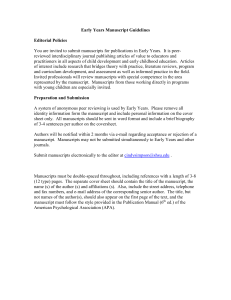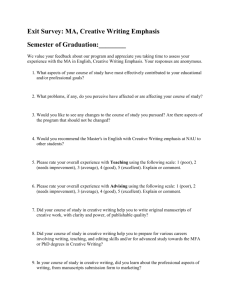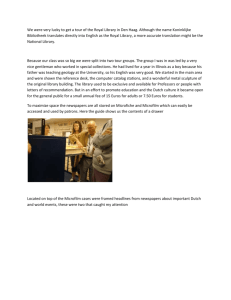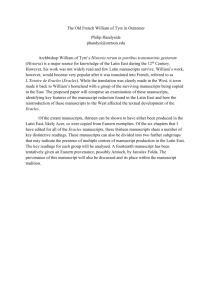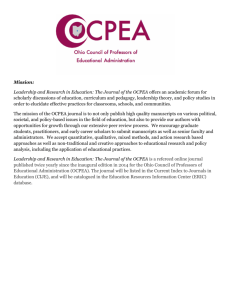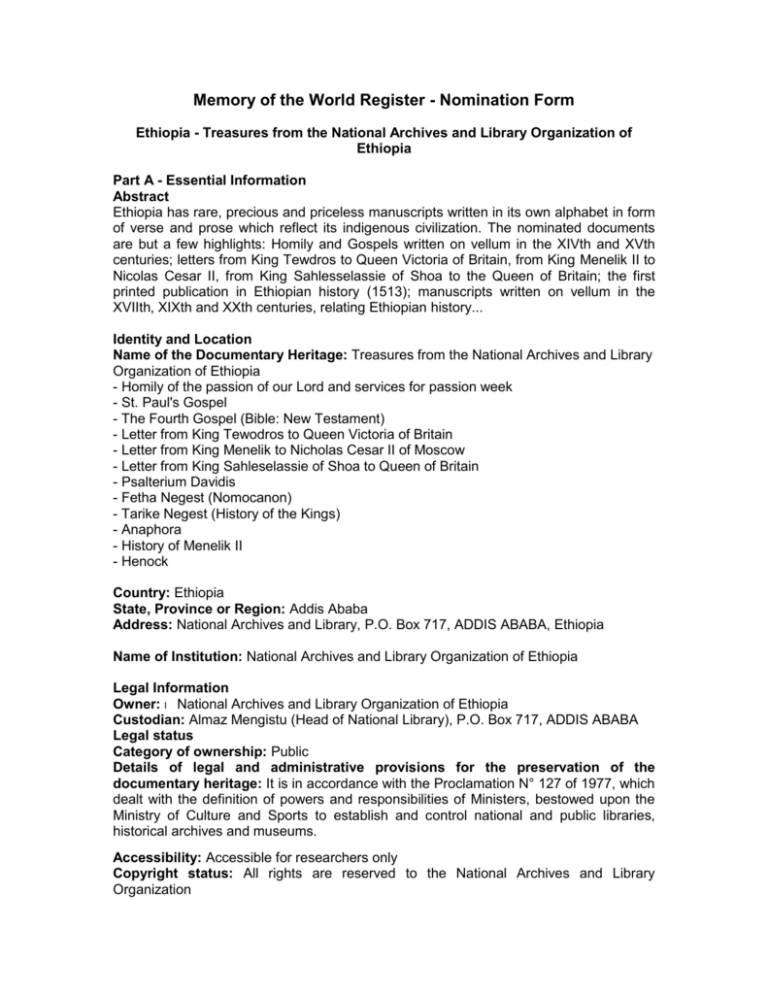
Memory of the World Register - Nomination Form
Ethiopia - Treasures from the National Archives and Library Organization of
Ethiopia
Part A - Essential Information
Abstract
Ethiopia has rare, precious and priceless manuscripts written in its own alphabet in form
of verse and prose which reflect its indigenous civilization. The nominated documents
are but a few highlights: Homily and Gospels written on vellum in the XIVth and XVth
centuries; letters from King Tewdros to Queen Victoria of Britain, from King Menelik II to
Nicolas Cesar II, from King Sahlesselassie of Shoa to the Queen of Britain; the first
printed publication in Ethiopian history (1513); manuscripts written on vellum in the
XVIIth, XIXth and XXth centuries, relating Ethiopian history...
Identity and Location
Name of the Documentary Heritage: Treasures from the National Archives and Library
Organization of Ethiopia
- Homily of the passion of our Lord and services for passion week
- St. Paul's Gospel
- The Fourth Gospel (Bible: New Testament)
- Letter from King Tewodros to Queen Victoria of Britain
- Letter from King Menelik to Nicholas Cesar II of Moscow
- Letter from King Sahleselassie of Shoa to Queen of Britain
- Psalterium Davidis
- Fetha Negest (Nomocanon)
- Tarike Negest (History of the Kings)
- Anaphora
- History of Menelik II
- Henock
Country: Ethiopia
State, Province or Region: Addis Ababa
Address: National Archives and Library, P.O. Box 717, ADDIS ABABA, Ethiopia
Name of Institution: National Archives and Library Organization of Ethiopia
Legal Information
Owner: l National Archives and Library Organization of Ethiopia
Custodian: Almaz Mengistu (Head of National Library), P.O. Box 717, ADDIS ABABA
Legal status
Category of ownership: Public
Details of legal and administrative provisions for the preservation of the
documentary heritage: It is in accordance with the Proclamation N° 127 of 1977, which
dealt with the definition of powers and responsibilities of Ministers, bestowed upon the
Ministry of Culture and Sports to establish and control national and public libraries,
historical archives and museums.
Accessibility: Accessible for researchers only
Copyright status: All rights are reserved to the National Archives and Library
Organization
Responsible administration: The sole administrator and caretaker of these
manuscripts is the National Archives and Library Organization.
Identification
Description:
a) Homily of the Passion of our Lord and Services for passion week – The
manuscript is written on vellum of horse in two columns in the Geez language in the
XVth century. The writings are bold and neat. Names and headings are rubricated. Its
size is 46 x 33.5 cm and has 434 pages with wooden board covered with stamped
leather. (Original)
b) St. Paul's Gospel (Bible: New Testament) - The manuscript is written on vellum in
two columns in the Geez language in the XVth century. The writings are bold and neat.
A painted picture (drawing) of St. Paul and his followers is seen in the book. Its size is
34.6 x 25 cm and has 281 pages and is covered by hard leather. (Original).
c) The Fourth Gospel (Bible: New Testament) - The manuscript is written on vellum in
two columns in the Geez language in the XIVth century. The writings are bold and neat.
Its size is 29.5 x 20.5 cm and has 554 pages. The first 45 pages of the book are filled
with painted pictures (drawings); particularly of Jesus Christ, his followers, Saints,
Angels etc. The book is partially damaged due to mis-handling.
d) Letter from King Tewdros to Queen Victoria of Britain - The letter deals with the
misunderstanding created between him and the Queen. He also urges the Ethiopian
people to go along with the direction he has started so as to develop the Nation. And
finally his dreams to bring about a competent Nation and the misunderstanding created
by his men; his final repentence is stated. (Original)
e) Letter from King Menelik II to the King of Moscow Nicolas Cesar II - The letter
deals with Meneliks victory over Italians at Adowa in 1896 and acknowledges the King
and the Red Cross Society who were by his side. In the same letter, he also requested
the King to further strengthen the relationship between Ethiopia and Moscow. (Original)
f) Letter from King Sahlesselassie of Shoa to the Queen of Britain - The letter deals
with the reception and dialogues between the King and the envoys of the Queen. In the
same letter he also asked to strengthen the ties with Britain. (Original)
g) Psalterium Davidis - The Book is written by Johannes Potken in Geez language with
an introduction in German language and was printed in Rome, 1513. The book is printed
without change in the calligraphy of the writer. It is considered as the first printed
publication in Ethiopian history. (Original)
h) Fetha Negest (Nomocanon) - The manuscript is written on vellum in two columns in
the Geez language in the XIXth century. The writings are bold and neat. Its size is
22 x 23 cm and has 146 + 7 V and 1 V folio with wooden boards covered with stamped
leather. It is full of marginal notes.
* The text is partly damaged by water
* Wooden boards broken on one side but connected with some pieces of cords
* The text is badly damaged due to carelessly handling and long service
* It has marginal notes and designs. It also has illumination. There are musical notations
over the text
* It has plety of marginal notes and designs
(Microfilm)
i) Tarike Negest (History of kings) - The manuscript is written on vellum in two
columns in the Geez and Amharic language in the XXth century. The writings are bold
and neat. Its size is 21.3 x 16.5 cm and has 12 folios with paperback cover.
(Microfilm)
j) Anaphora - The manuscript is written on vellum in two columns in the Geez language
in the XVIIth century. The writings are bold and neat. The headings and names are
rubricated. There are musical notes over most of the text. It has marginal notes and
designs. Its size is 19.5 x 15.5 cm and has 78 folios with wooden boards cover.
(Microfilm)
k) History of Menelik II - The manuscript is written on paper in one column in Amharic
language in the XIXth century. The writings are bold and neat. It includes the
Governments of Shewa and its Districts and diary and St. Tekle Haimanot and history of
aromo people. Its size is 21 x 17 cm and has 178 folio with hard cover.
(Microfilm)
l) Henock - The manuscript is written on vellum in two columns in the Geez language in
the XVth century. The writings are fine and neat. Its size is 15.5 x 19 cm and has 160
folios with simple wooden boards cover. There are marginal notes on each page. Some
times the pen changes. It includes 10 other books in between. (Microfilm)
Management Plan
Assessment against the Selection Criteria
The manuscripts selected are authentic sources of history and are rare collections
Consultation
Nominator
Name : Mr Akalu Woldemariam
Relationship to doc. heritage : Historian and Team Leader to Translation & Research
Department
Contact details : P.O. Box 717, National Archives & Library, ADDIS ABABA, Ethiopia
Assessment of Risk
Most of the manuscripts are not in a good physical condition. Because of financial
constraint, it is not even possible for the Department to provide microfilm or Xerox copy.
Instead, the original copy is always at the disposal of researchers. This kind of service,
by its very implication, has its own contribution to the deterioration of the physical
condition of the manuscripts.
Ethiopia has rare, precious and priceless manuscripts written in its own alphabet in form
of verse and prose which reflect its indigenous civilization. Apprehending their historical,
religious, philosophical, artistic and socio-cultural values, the Ethiopian National Archives
and Library is trying its best to collect all those manuscripts for scholastic research and
preserve them for the next generation. In so doing the department has managed to
microfilm 10,000 manuscripts and books written on vellum (parchment). There are also
some written on paper. Alongside with these, it also has managed to collect hundreds of
original copies. This activity was made possible through the financial assistance from
donor agencies (like the Ford Foundation). But, at present, there is no more financial
assistance; therefore the Library could not go ahead with its collecting. Because the
budget allocated by the Government of Ethiopia is not sufficient enough to
accommodate the problem. Leaving aside the collections under the custodianship of the
Library, it is estimated that some 500,000 manuscripts are still preserved by their owners
and their legal successors. Had the microfilming activity along with the inventory
continued, it could have been possible to rescue the endangered manuscripts and
preserve them for posterity in the National Library.
Finally, the nominator sincerely admits that the above-mentioned manuscripts are not
the only proper ones to be nominated. The nomination here is only meant to give
highlight. Unless a project designed and sponsored by a donor is carried out, I feel that it
is impossible to select and be up to the demands of the "Memory of the World" Register
from a large number of collections the National Library has.

